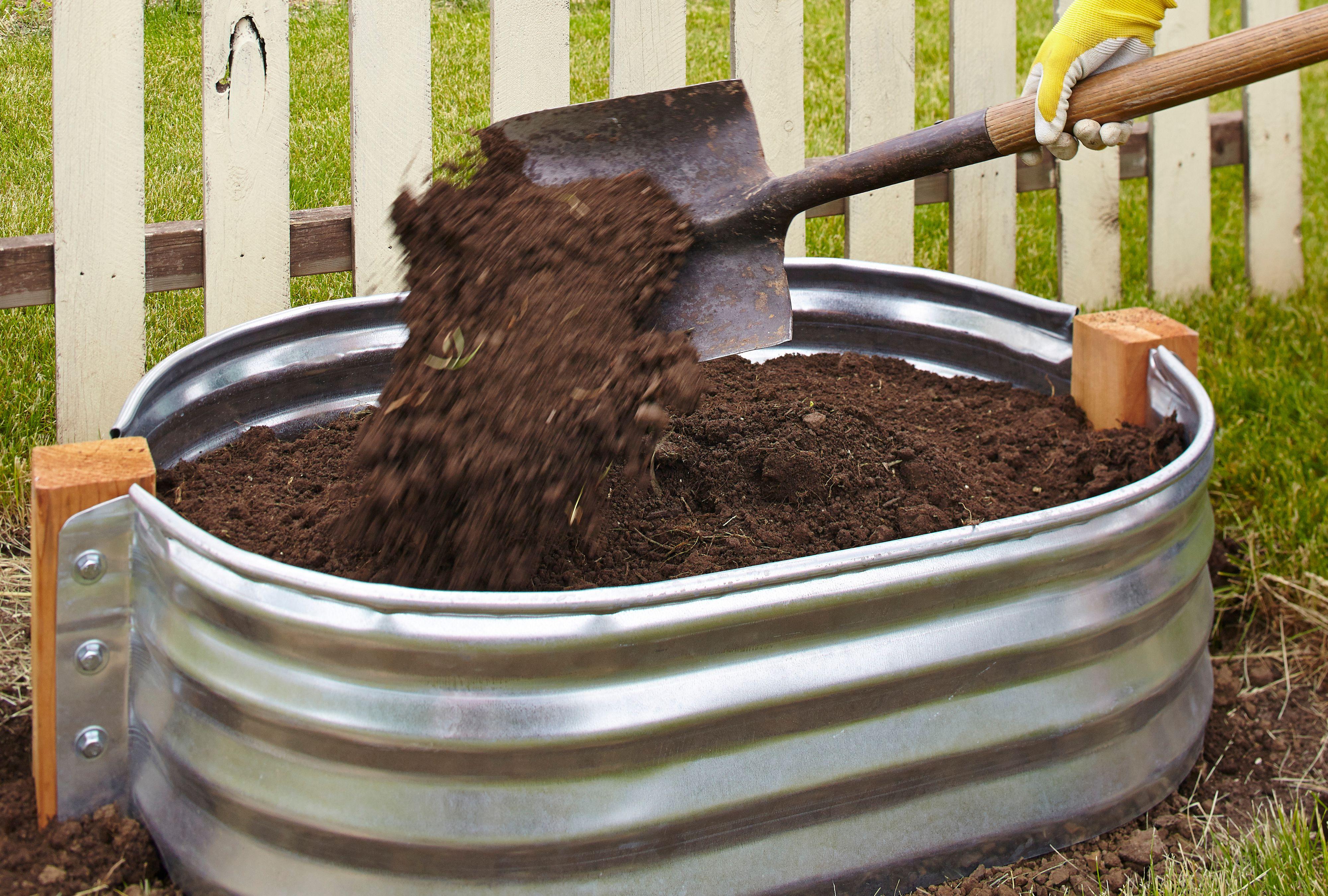Raised gardens are typically filled with a rich, raised bed soil mix made of sand, compost, and topsoil. However, to get even better results from raised bed gardening, you can add other materials to the base of raised beds before shoveling in the soil. The following products and amendments can block out weeds, prevent pests, and even save you money.
Benefits of a Base Layer
To offset the cost of soil, growers often add organic materials to the base of deep raised beds to fill space. Layering weed and pest barriers, along with slow-release soil amendments, in raised beds makes them easier to maintain in the long run and helps plants grow better. Best of all, many of the items you can use in the bottom of raised beds can be gathered from your garden, kitchen, or recycling bin at no cost.
Related
Items to Put at the Bottom of Raised Beds
While you can fill raised beds with various items from around your home and garden, it’s essential to use only food-safe materials in vegetable and herb gardens. Here are some of the best items to add to the base of raised beds, along with an explanation of why these materials work so well.
1. Cardboard
If you’re installing a new raised bed, chances are good that weeds and grass are already growing in the location you’ve chosen for the bed. Mowing these unwanted plants low to the ground reduces weedy issues in your planting bed, but grass and weeds often resprout if you don’t take extra precautions to keep them in check. One way to do this is to cover the area where you’re installing raised beds with cardboard, which smothers any remaining weeds before breaking down and degrading back into the soil.
2. Newspaper
Like cardboard, newspaper can also be used to block out weeds and keep grass from regrowing in raised beds. However, newspaper is thinner than cardboard, so apply it in thicker layers that are several sheets deep.
Stick to newspapers and avoid using magazines and advertising inserts with glossy inks, which may not be safe for food gardens.
3. Weed Barrier Fabric
Plastic weed barrier fabric can create a mess in raised garden beds when it starts to degrade and shreds into bits of plastic. For this reason, it’s usually best to use biodegradable cardboard or newspaper as the base of raised beds for weed suppression. However, install weed barrier fabric under raised beds if your beds are positioned near black walnut or similar trees and you want to reduce juglone exposure.
4. Hardware Cloth
Struggling with groundhogs, voles, and other digging animals in your garden? Consider installing hardware cloth across the bottom of raised beds before filling them with soil. This fine mesh material is made from welded wire, and it’s one of the best ways to keep animals from nibbling on root crops, tubers, and bulbs.
5. Sticks, Twigs, and Logs
Once you’ve installed weed and pest barriers, it’s time to fill up the raised beds. You can save a lot of money and reduce the amount of soil you need to purchase by first adding sticks, twigs, or small logs to the base of raised beds. These items can improve drainage, and as in hugelkultur gardening, they eventually break down into the soil, providing a slow release of nutrients to growing plants.
Avoid pouring gravel into the base of raised beds for drainage. Gravel can interfere with root growth and potentially cause a mess if it mixes into the surrounding soil.
6. Wood Chips and Mulch
While sticks and twigs are usually easier to find around the garden, you can also add a shallow layer of wood chips or mulch to the base of raised beds. Like sticks and twigs, wood chips and mulch are biodegradable, enriching the soil as they decompose. However, don’t apply wood chips or mulch in thick layers, as these materials are dense and can potentially interfere with drainage if applied in excessive amounts.
7. Autumn Leaves
Fallen leaves contain nutrients that help plants grow. Adding them to the base of raised beds is an easy and free way to increase the nutrient content of your soil. If possible, mulch autumn leaves before adding them to your beds, and avoid using leaves from trees like black walnuts, which may interfere with the growth of plants such as tomatoes.
8. Compost
Compost is typically blended into garden soil to improve drainage, enhance water retention, and enrich the soil. You can also add a few inches of compost to the base of your raised beds. This saves money on soil orders, and your plants will appreciate the extra nutrient boost when their roots grow down into the compost layer.
Marty Baldwin
9. Other Organic Items
Pinecones, pine needles, seed-free weeds, kitchen scraps, seaweed, and more can all be added to compost bins to create homemade compost. These same items can be layered into the base of raised beds as-is to fill space and add nutrients to your beds. Remember to bury food scraps under at least 10 inches of soil so they don’t attract the attention of unwelcome wildlife.



